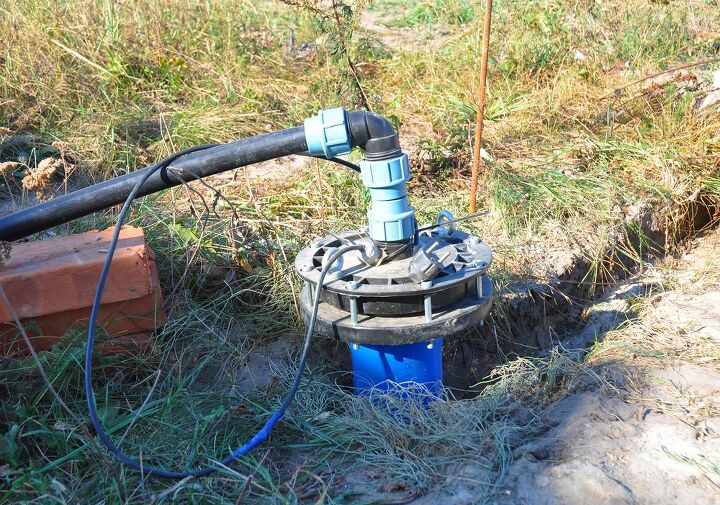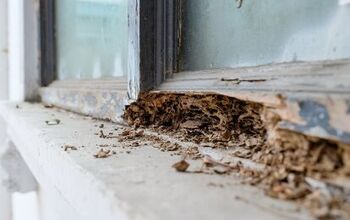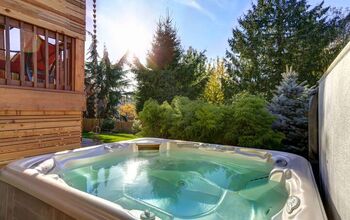How Often Should A Well Pump Cycle? (Find Out Now!)

One of the most significant factors that keep your home running smoothly is your plumbing. You use water for all sorts of things in your house. Whether it’s washing clothes and dishes, using the bathroom, brushing your teeth, or taking a shower, you need water.
If you live in a more rural area, you likely utilize a well system as your primary water source. Typically, how often a well pump should cycle depends on many factors, so there is no one set number. Primarily, the condition and size of the pump for the household will greatly influence how often the pump cycles.
Ideally, a well pump runs to fill the water tank in the home, then stays off until the water drops below a point. Once the water drops to this predetermined level, then the pump would once again start running. Too much cycling can decrease your pump’s lifespan; therefore, the real question becomes, is your good pump cycling too much?
How Often Should A Well Pump Cycle?
The main point is you don’t want your well pump cycling too often because it dramatically decreases your pump’s lifespan.
Therefore, the fewer cycles, the better. Basically, a well pump can cycle as little as ten times a day or more than 300.
It depends on the frequency of use, pressure tank size, and GPMs (gallons per minute). You can bet, if your well pump is cycling 300 times a day, it won’t last very long.
If your pump cycles continuously, you either need a larger tank, a new pump, or some other issue is at play.
Know Your Well Pump
If your well pump is operating normally and you’re using water, runtime could be between 30 seconds and two minutes.
Again, this all depends on several factors like the motor, GPMs, and average tank size. You can’t simply stick an across-the-board answer on several cycles since too many variants are at play.
Pay attention to the average number of cycles when your pump is in good condition and usually working.
Take notes of how often you use water in relation to how often the pump cycles. Then, if you start to notice more cycles, but nothing else has changed, you can assume something is amiss.
What Is A Well Pump Supposed To Do?
Your well pump plays a significant part in ensuring you have the water you need. A well pump draws water up from your well and brings it into your home’s water system. Alternatively, the water can go into a pressure tank where it waits for you to use it for various tasks.
Well Pump Cycling: Consider The Pressure Tank
A pressure tank maintains the pressure throughout your water distribution system. It also stores water, so your well pump doesn’t have to run to continuously draw water up from the well. Without a pressure tank, your pump will basically cycle 24/7, burning out fairly quickly.
Typical residential pressure tanks are between 20 and 80 gallons, with an average of around 40 gallons. The standard pressure is usually 40/60 psi. This means the pump turns on when the pressure hits 40 psi and turns off when it reaches 60 psi.
How Often Should It Cycle?
It’s probably a no-brainer that having a larger pressure tank means your well pump would cycle less. However, it’s important to note that pressure tanks don’t only hold water. The tanks consist of about ⅓ of water, and the rest of the contents is air.
The compressed air inside of the tank is supposed to be there. It helps create the pressure that pushes water up into your home’s water system. Therefore, having the right size pressure tank plays a major role in ensuring your well pump doesn’t cycle too often.
What Size Pressure Tank Do You Need?
Most likely, a 20-gallon tank will be too small, while an 80-gallon one will be too large. While it’s essential to have an appropriately sized tank, it’s better to go larger than too small.
Your storage tank’s size needs to work with your pump’s capacity, but you don’t have to get too technical. Here is a quick test you can use to determine the correct size pressure tank for your well pump.
Use a garden hose to run water at full blast into marked 5-gallon buckets (you’ll likely need two buckets). Let the water run for one minute exactly. Ensure that no other water is running elsewhere in your home.
After one minute, count the total number of gallons in the buckets. Multiply the number of gallons by four and round up to determine the size of your storage tank. For example, if you end up with eight gallons of water, multiply 8 by 4 to get 32.
What Are The Different Types Of Well Pumps?
Speaking of knowing your well pump, it’s also important to know what type of well pump you have.
Shallow Well Pumps
Shallow well pumps typically work with wells 25 feet deep or less. They sit above the ground, drawing out water through one pipe.
Typically a one-way check valve primes the well pump, and you may need a booster for constant water pressure.
Submersible Well Pumps
Submersible well pumps are underground, submerged in water in the well casing. A pipe connects the well to the pressure tank in the home. These pumps typically work with wells that are between 90 and 400 feet deep.
You can find two-wire and three-wire submersible pumps. Two wires are easy to install but feature built-in controls, requiring you to remove them from the well casing for maintenance.
Conversely, three-wire pumps feature a separate control box that stays above ground for easy maintenance.
Jet Pumps
Jet pumps rely on atmospheric pressure to push water, and you need to prime them with a foot valve. These pumps are above the ground, drawing water from one pipe and sending it through another. Typically, these pumps work with wells that are between 25 and 110 feet deep.
What Is Short-Cycling?
If you notice your pump turning off and on too quickly, it’s short-cycling. Rapid cycling can severely damage your pump and controls. Using more water than your pump can handle at one time can cause it to short cycle.
For example, if you use sprinklers often to water your lawn and gardens, it’s essential to know the proper flow rate. If you use up more water than is in the storage tank, air can get into your pump, causing overheating.
A lack of air in your water tank can also cause short-cycling issues. You might notice condensation on your water tank or that it feels cooler on the bottom.
Or, your pressure tank might have no condensation, or there could be the low water pressure in your house.
Issues With The Pump
There could also be a defective water pressure control switch. You can check for corrosion on the contacts or a clog in the switch’s opening. There could also be clogged pipes between the switch and the pump.
Similarly, there could be a clogged or dirty water filter, causing a sudden rise in pressure in the pump. You could try changing the filter and removing any clogs to see if it fixes the problem. But in many cases, you might need to consult with a professional.
When Do You Need A Pro for Your Well Pump Problems?
If you notice your well pump cycling more often than usual or running constantly, you can try some DIY steps first.
Check for clogged or dirty pipes and filters and ensure the pressure switch is in good condition. It’s also essential to make sure you have the right-sized pump and tank for your household.
If you have an inadequately sized pump or pressure tank, it’s time for a replacement. Also, if the pressure switch frequently clicks when no water is flowing, you need to call a pro.
If you notice wet ground between your house and the wellhead, hiring a professional is also time. This could indicate several more significant issues, like a broken water line or a bad check valve.
Related Questions
How much does it cost for professional well-pump repair?
A professional repair can cost you anywhere from $350 to over $1,500. It all depends on the pump, the issue, your pump’s location, and the professional’s rate. Pros can charge anywhere from $50 to over $100 an hour.
How much is it to replace a well-pump?
A well pump itself can be anywhere from $100 to over $1,200. Then, you have to figure the cost of the installation. Therefore, you could end up paying between $1,500 and $2,500 to replace a well pump. It could run you even more if complicated factors are at play.
How long does a well pump last?
A well-maintained well pump averages between 8 to 15 years, with an average of 8 to 10. However, a lot depends on your pump’s make-up and use. Having a pressure tank can significantly increase your pump’s lifespan.
More Related Guides

Stacy Randall is a wife, mother, and freelance writer from NOLA that has always had a love for DIY projects, home organization, and making spaces beautiful. Together with her husband, she has been spending the last several years lovingly renovating her grandparent's former home, making it their own and learning a lot about life along the way.
More by Stacy Randall

























![Standard Dining Room Table Dimensions [for 4, 6, 8, 10 and 12 People]](https://cdn-fastly.upgradedhome.com/media/2023/07/31/9074335/standard-dining-room-table-dimensions-for-4-6-8-10-and-12-people.jpg?size=350x220)

